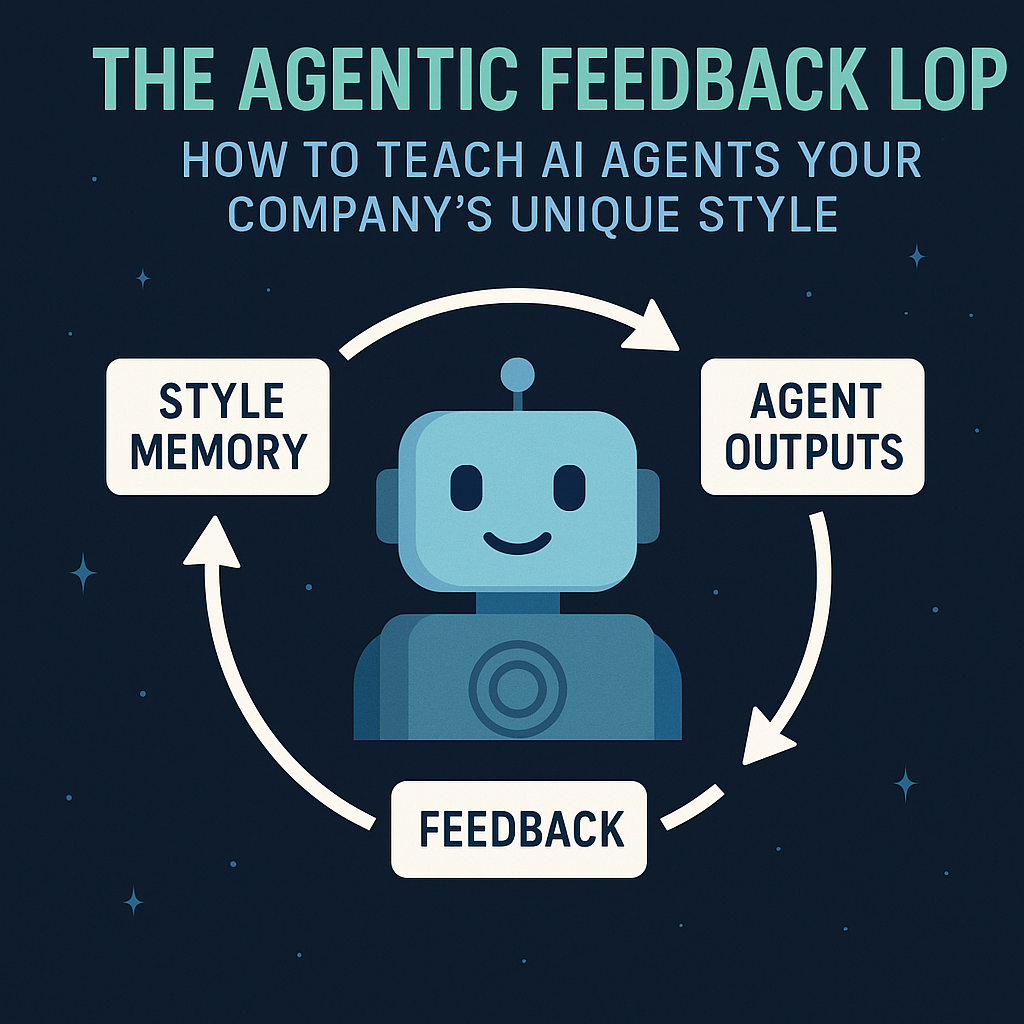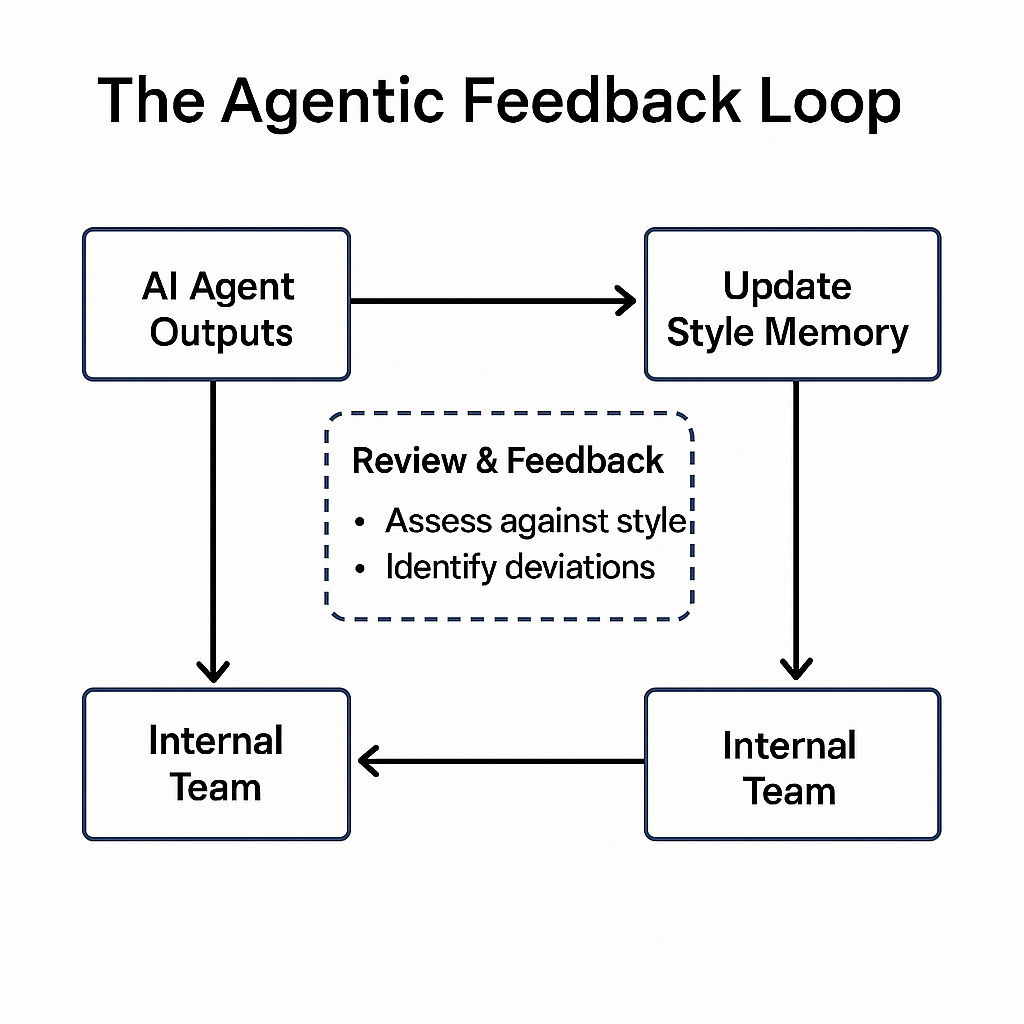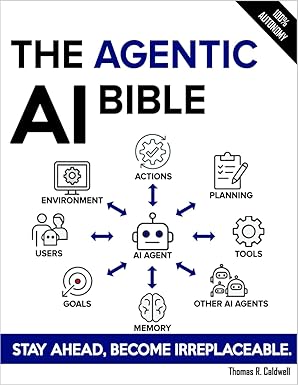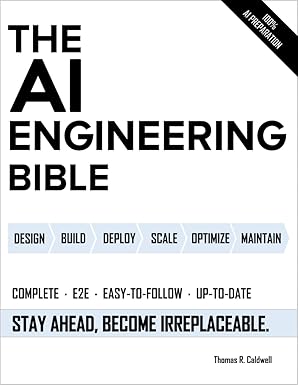The Agentic Feedback Loop: How to Teach AI Agents Your Company's Unique Style

Ad Space
In the rush to adopt AI agents, most organizations focus on speed.
They run pilots, benchmark productivity, and celebrate the fact that an AI can scaffold a new service in minutes.
But then, something subtle — and damaging — starts to happen.
The outputs don't feel like us.
The AI writes tests in a format our engineers never use.
It structures documentation in a way that clashes with our tone.
The naming conventions are almost right… but not quite.
And in a world where your style is part of your brand, that's not just cosmetic — it's operational debt.
This is where the Agentic Feedback Loop comes in.

Prerequisites
To follow along with this guide, you'll benefit from having:
- A basic understanding of AI agent workflows (Cline, Copilot, Cursor, or custom agents)
- Familiarity with the Model Context Protocol (MCP) concept
- Access to an MCP server like KnowledgeGraphMemory
If you're new to MCP, start with /posts/automating-mcp-servers-guide.
Why Style Matters for AI Agents
When people hear "style," they think aesthetics — fonts, colors, tone. But in engineering and product work, style is structure.
- It's the way we name variables so that a junior developer can instantly understand intent.
- It's the way our product voice stays consistent across documentation, marketing, and in-app prompts.
- It's the subtle architectural patterns that make our codebase predictable instead of chaotic.
Style is not fluff. It's institutional memory — and without it, AI agents become unpredictable collaborators.
The Concept of a Style Memory
Think of a style memory as a persistent, living record of how we do things here.
Not a static style guide buried in Confluence, but a machine-readable, always-updating reference that your AI agents can check every single time they create something.
Unlike full-blown model fine-tuning, which is expensive and locked to one LLM, a style memory can be:
- Portable across tools (Cline, Copilot, Cursor, custom agents)
- Updated instantly without retraining
- Shared between humans and AI for alignment
Step 1: Document Your Style in Plain Language
Before you involve a single server or schema, talk to your team.
Ask engineers: "When the AI writes code for you, what's the first thing you fix?"
Ask product writers: "What phrases do we never use?"
Ask designers: "What do we mean when we say 'clean'?"
Capture those answers. Keep them short. Make them human-readable.
Example: "Use
snake_casefor variable names in Python."
Example: "Avoid words like 'synergy' or 'cutting-edge' in customer-facing text."
Step 2: Make It Machine-Readable
Once you've got human-readable rules, it's time to make them machine-usable.
{
"code_style": {
"naming_conventions": {
"python": "snake_case",
"javascript": "camelCase"
},
"testing": {
"coverage_minimum": 85,
"framework": "pytest"
}
},
"writing_style": {
"tone": "friendly but professional",
"banned_phrases": ["cutting-edge", "synergy"],
"preferred_terms": {
"client": "customer",
"issue": "bug"
}
}
}
This format lets any AI agent — regardless of its underlying model — instantly check your style rules before suggesting output.
Step 3: Store and Share It With MCP
MCP servers like KnowledgeGraphMemory make it possible to store this style memory once and let all your agents use it.
- One central source of truth
- Updates apply instantly
- No need to retrain models for every change
Flow:
- AI Agent receives a request (e.g., "Generate unit tests for this function").
- Agent queries the style memory from KnowledgeGraphMemory MCP.
- Agent applies those rules when generating output.
- Output is reviewed; if it breaks style, corrections are logged back to the style memory.
This is the feedback loop in action.
Step 4: Create the Feedback Loop
The real magic isn't just storing rules — it's evolving them.
- Every time an AI's output needs correction, capture that correction.
- Feed it back into the style memory in a structured way.
- Let the next request benefit from the last mistake.
It's like onboarding a new engineer — except this engineer works at machine speed and never forgets.
Step 5: Run It in Shadow Mode First
Before you let style-enforced agents push to production, run them in shadow mode.
This means they suggest changes, but humans decide whether to apply them.
You'll learn two things quickly:
- How often the AI already matches your style
- Where your style memory is missing detail
Troubleshooting Common Pitfalls
- Too Vague Rules: "Write clean code" means nothing to an AI. Be specific.
- Overly Rigid Rules: Avoid making your style so strict it stifles creativity or innovation.
- No Review Process: Without feedback from humans, the style memory will stagnate.
- Ignoring Cross-Team Differences: One-size-fits-all style often fails in large orgs.
Cost Comparison: Style Memory vs Fine-Tuning
| Approach | Setup Cost | Ongoing Maintenance | Flexibility | Portability |
|---|---|---|---|---|
| Style Memory | Low | Low (simple edits) | High | High |
| Fine-Tuning | High | High (retrain for updates) | Low | Low |
A style memory is often the smarter first step — fine-tuning should be reserved for domain-specific knowledge that can't be expressed as rules.
Expanded Case Study: Aligning Brand Voice in 3 Weeks
A SaaS company rolled out a style memory across both their developer and documentation AI agents.
In the first week, engineers reported 37% fewer manual edits to AI-generated code.
By the second week, documentation compliance with the tone guide increased from 62% to 91%.
By week three, the docs team said "It's like the AI finally speaks our language."
The total cost? One afternoon of JSON schema setup, integration with KnowledgeGraphMemory, and three weeks of incremental feedback.
Key Takeaways
- Style isn't cosmetic — it's operational.
- A style memory creates consistency without expensive retraining.
- MCP servers make style portable and persistent across tools.
- The feedback loop makes your AI better over time.
Call to Action
If you want to explore the MCP side of making this happen, check out:
- /posts/unlocking-agent-potential-7-mcp-servers-that-supercharge-your-ai-agents
- /posts/automating-mcp-servers-guide
Download our starter JSON template to begin your own style memory.
Ad Space
Recommended Tools & Resources
* This section contains affiliate links. We may earn a commission when you purchase through these links at no additional cost to you.
📚 Featured AI Books
OpenAI API
AI PlatformAccess GPT-4 and other powerful AI models for your agent development.
LangChain Plus
FrameworkAdvanced framework for building applications with large language models.
Pinecone Vector Database
DatabaseHigh-performance vector database for AI applications and semantic search.
AI Agent Development Course
EducationComplete course on building production-ready AI agents from scratch.
💡 Pro Tip
Start with the free tiers of these tools to experiment, then upgrade as your AI agent projects grow. Most successful developers use a combination of 2-3 core tools rather than trying everything at once.
🚀 Join the AgentForge Community
Get weekly insights, tutorials, and the latest AI agent developments delivered to your inbox.
No spam, ever. Unsubscribe at any time.



